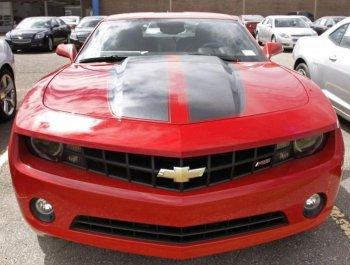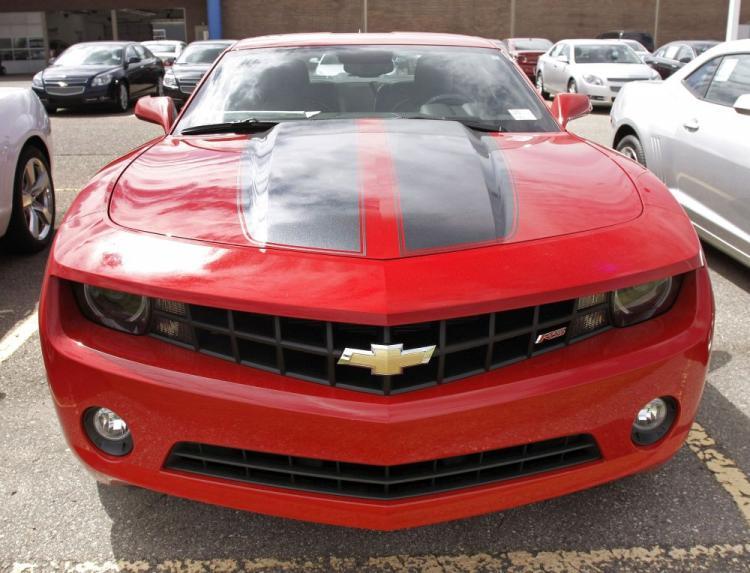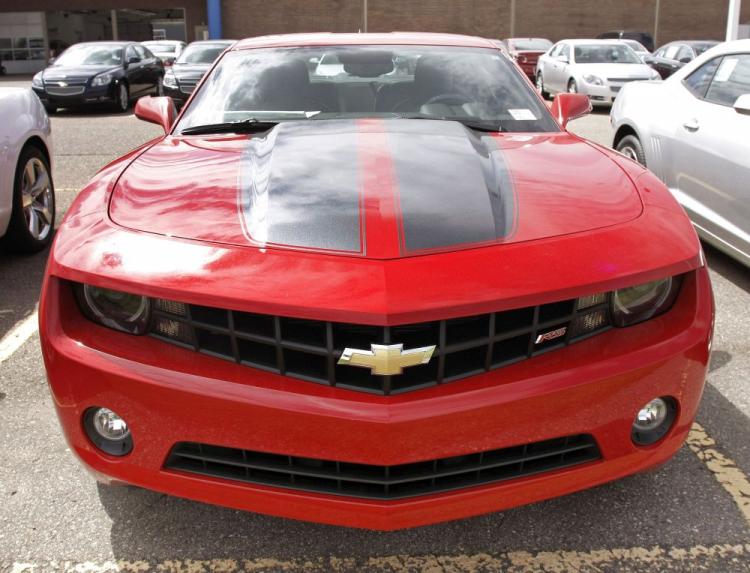In November, GM’s sales increased by 21 percent over the same period in 2009. Having shed non-core brands, the firm appears to be making a comeback with its four brands and a slew of new vehicles.
Buick’s November sales were up by more than one-third, the largest monthly increase among the four brands, while its year-to-date sales are up a whopping 54 percent. GMC’s sales didn’t match the Buick success, but still saw a little less than a one-third monthly increase and 28 percent for the year. Cadillac reported a 21 percent monthly increase and year-to-date sales increased by more than one-third. Lastly, Chevrolet lagged behind with 18 percent monthly and 17 percent year-to-date increases.
“Each brand came to the party in November,” said Don Johnson, vice president of U.S. sales operations at GM, in a December release.
He continued, “These results show that our brands continue to gain momentum with consumers who want stylish, fuel-efficient vehicles.”
GM reported a net profit of $2 billion and sales revenues of $34.1 billion during its third quarter 2010 earnings call. This is quite a turnaround from the $908 million net loss posted in the same period in 2009.
Shareholders’ equity still shows a deficit of $236 million, but this is a vast improvement from the $4.4 billion retained earnings deficit exactly a year ago.
“As demonstrated by our third consecutive quarter of profitability and positive cash flow, these results continue our significant progress,” said Chris Liddell, vice chairman and chief financial officer, in GM’s recent earning release.
Shedding Government Ownership and Debt
GM bought back 9 percent of its Series A preferred stock by paying the U.S. Department of the Treasury $2.1 billion. Approximately $700 million of this amount was paid from net income that belonged to common stock shareholders.
Returning to the market in full force, GM raised about $20 billion through an initial public offering (IPO) through lead underwriters Bank of America, Merrill Lynch, Morgan Stanley, J.P. Morgan, and Citigroup. According to media reports, the IPO will pay the underwriters close to $275 million in fees.
“General Motors’ initial public offering marks a major milestone in the turnaround of not just an iconic company but the entire American auto industry. Through the IPO, the government will cut its stake in GM by nearly half,” said President Obama in a recent White House statement.
Treasury invested a total of $49.5 billion in GM since the financial crisis. So far, the department has received $23.1 billion back, according to the Treasury, which includes $13.5 billion in net IPO proceeds, $2.1 billion for proposed preferred stock repurchase, $800 million in interest and dividends, and $6.7 billion in debt repayment.
“General Motors’ IPO is a testament to that company’s turnaround and the significant progress we have made continuing to exit our investments and recover taxpayer dollars,” said Tim Massad, acting assistant secretary for Treasury’s Office of Financial Stability.
Finally, to walk away from its debt and draw closer to being a debt-free company, GM told the world on the first day of December that its Korean subsidiary, GM Daewoo Auto & Technology Inc., would repay its Korean revolving credit facility in full, which had an unpaid balance of $1 billion at the end of September.
Academia Dissects the GM Deal
“The new GM still must compete in a tough global market. So the question remains: Can the new GM perform better than the old GM?” asked Knowledge@Wharton (KW) during a recent interview with Wharton management professor John Paul MacDuffie.
Before the IPO, the Treasury was 61 percent owner of GM. Now, it owns about one-third of the company, which makes it the largest single shareholder.
The professor suggests that GM was too big to fail because if GM was faced with a Chapter 7 bankruptcy and liquidation, all automakers in the nation, no matter if they were American- or foreign-owned, would go on the block.
“The government made a judgment call ... that this was not just a crisis of one company, but it was actually an industry crisis. General Motors and Chrysler were in the worst shape—if they failed, it would take down most of the supply base, which would make it impossible for Ford to produce cars, and for many of the foreign automakers that are building cars in the U.S.,” MacDuffie said.
MacDuffie doesn’t believe that another such bailout is in the making. Government intervention of this scope only happened once before, during the Great Depression.
Surviving in a Demanding Market
The new GM trimmed down by closing plants, laying off employees, negotiating new union contracts, and streamlining brands by selling Saab Automobile AB and getting rid of its unprofitable Hummer, Saturn, and Pontiac brands.
GM closed dealerships that were within close proximity to each other in an effort to stop steep discounting, which at times reduced profit margins to almost zero.
MacDuffie, although keeping an open mind concerning the survival of the new GM, is not yet sure of GM’s future.
Competition is tough, the consumer is more demanding, and revenue growth is more so in emerging markets, such as Brazil, Chile, Russia, and India, where the market is saturated.
One silver lining is that the automobile market is on the mend, and consumers are flocking to car dealerships once more.
U.S. automakers “also have to show good management of their global scope, finding ways to turn it to their advantage,” MacDuffie said.







Friends Read Free